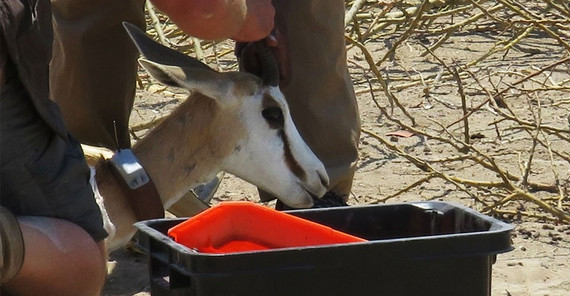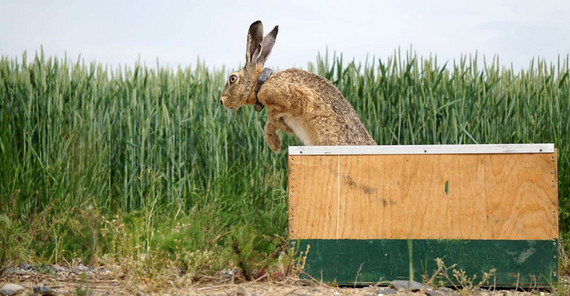The tagging of wildlife provides important insights into their movements, physiology, and behavior amid globally changing ecosystems. However, the stress caused by capture, handling, and tagging can have an effect on the locomotion and activity of the animals and thus also affect the validity of the collected data. Therefore, Potsdam researchers led by Jonas Stiegler and Niels Blaum, in collaboration with over 100 other scientists worldwide, analyzed the data of 1585 individuals from 42 species that had been fitted with GPS collars. “Over a period of 20 days after release, we analyzed how active the animals were and what distances they covered in order to see how much the animals deviated from their normal behavior and how long it took them to recover from the disturbance,” explains Jonas Stiegler, the lead author of the study.
30 of the 42 species studied changed their behavior significantly in the first few days after release, although there were noticeable differences between the species. For example, predators covered shorter distances on average after release, while most herbivores covered longer distances than normal. Moose (63 % further than the long-term average) and eland (+ 52 %) had the largest increase in displacement distance, while leopards (- 65 %) and wolves (- 44 %) exhibited the largest decrease. In general, omnivores and carnivores were less active in the first few days, while herbivores showed both increased and decreased activity rates. However, the data also revealed that the animals “recovered” at different rates: All species basically returned to their normal behavior within four to seven days. Omnivores and carnivores went back to a normal degree of activity and movement within five to six days, herbivores exhibited a normal range of movement more quickly (four to five days), but only returned to their usual degree of activity at a later stage (six to eight days). In addition, larger animals recovered more quickly than smaller ones. “However, it was particularly noteworthy that animals whose habitat is more strongly influenced by humans were the first to return to normal behavior,” Jonas Stiegler said. “Our evaluation clearly shows that the periods over which wild animals are tracked should be longer than one week in order to obtain meaningful results and to actually be able to study their natural behavior.”
Link to publication:
Stiegler, J., Gallagher, C.A., Hering, R. et al. & Blaum, N. Mammals show faster recovery from capture and tagging in human-disturbed landscapes. Nat Commun 15, 8079 (2024). https://doi.org/10.1038/s41467-024-52381-8
Photos:
2024_089_springbok_collared_Robert_Hering: Springbok with tracking collar. Photo: Robert Hering
2024_089_springbok_being_collared_close_Robert_Hering: Springbok is fitted with a tracking collar. Photo: Robert Hering
2024_089_hare_release_Carolin_Scholz: A hare fitted with a tracking collar jumps out of a transport box. Photo: Carolin Scholz.
Contact:
Jonas Stiegler, Animal Ecology, Department of Biology and Biochemistry
Phone: +49 331 977-1924
E-Mail: stiegleruuni-potsdampde
Media information 30-09-2024 / No. 089



